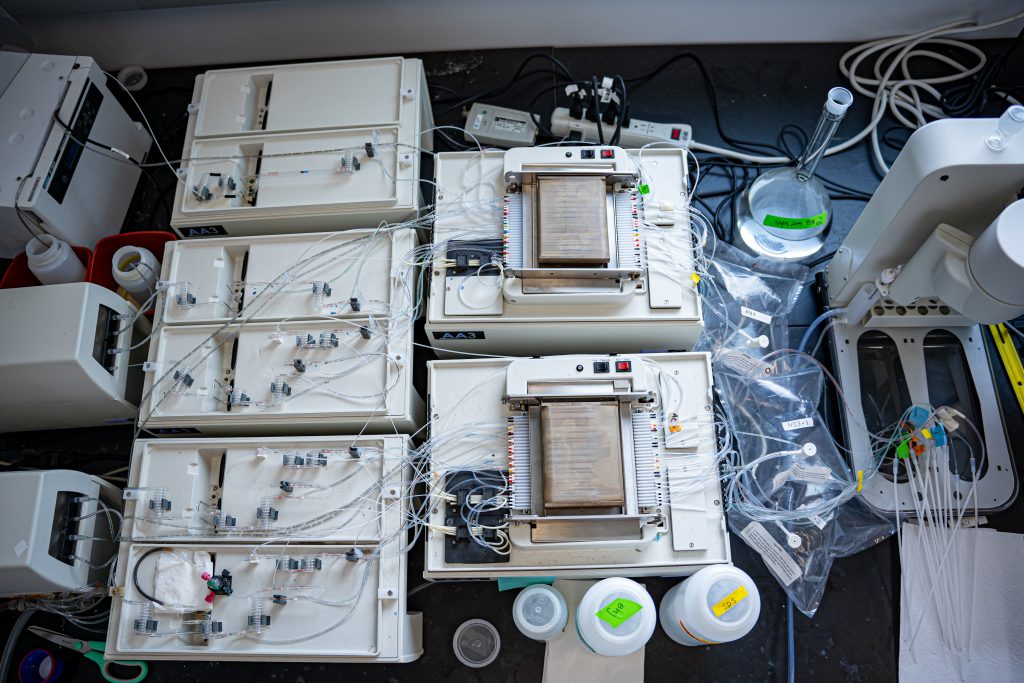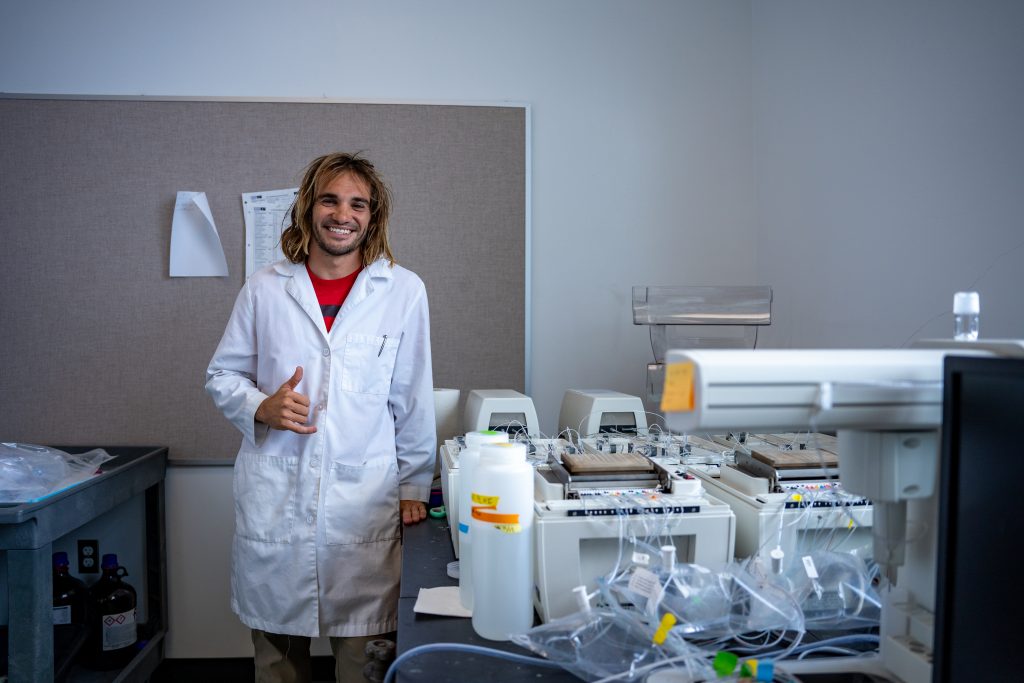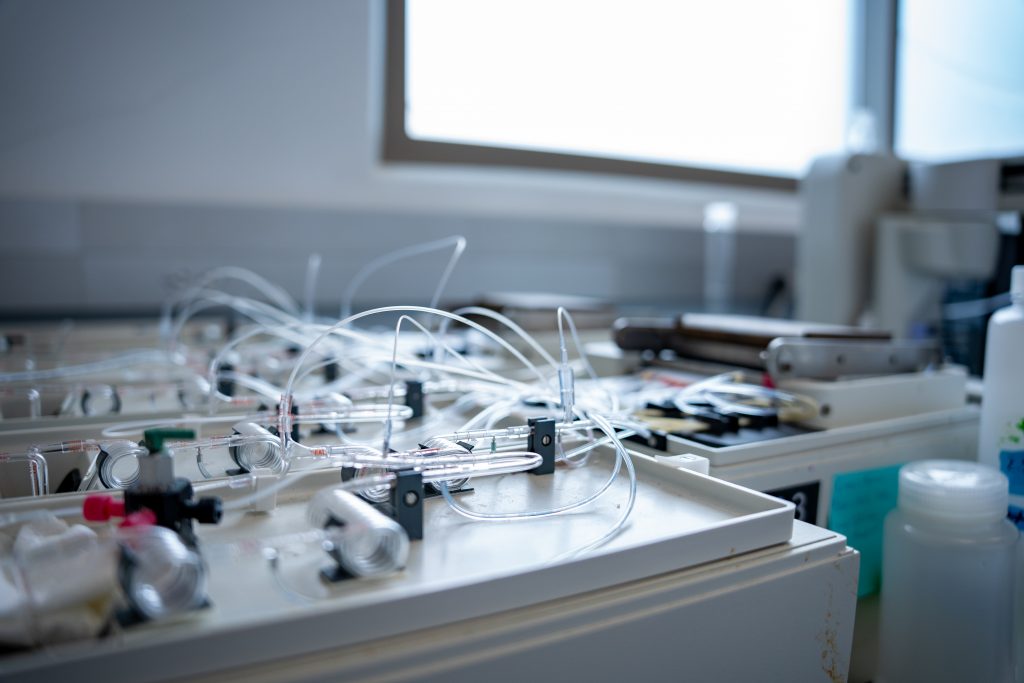Maui College scholar chosen to present post-wildfire biomedical study at national conference in Washington D.C.
At the annual undergraduate Biomedical Sciences Symposium last month, five Hawaiʻi scholars were selected to present original research at a national conference in Washington D.C. in June. Among the scholars announced was Maui’s Luz Maria Deardorff, who will present undergraduate research conducted at the University of Hawaiʻi Maui College that analyzed microbes to ascertain human health impacts of the Lahaina wildfires.
Working closely with Deardorff was Kīhei Charter School student Tara Zamani and retired UH professor Dr. Sally V. Irwin, who initiated the research last October with funding from the National Institute of Health (NIH) through the IDeA Networks of Biomedical Research Excellence (INBRE).
“Our lab hypothesized that there would be an increase in microbes in the environment post-wildfire,” said Zamani. “To test this, we began monitoring non-tuberculous mycobacteria, E. coli and Enterococcus.”
Non-tuberculous mycobacteria (NTM) — found in soil, water and dust — has been linked NTM to chronic lung disease, particularly in Hawaiʻi, where it’s prevalence seems to be higher than in most other states nationwide.
Zamani embarked on a sampling campaign in October 2023 to assess the presence of NTM to inform public health risk within and outside the burn zone. The sampling took place at 11 different homes and one stream in West Maui.
Additionally, in February 2024, the student researchers utilized the UH Maui College Water Quality Lab to analyze water samples for E. coli and Enterococcus bacteria. They compared their data prudently to thresholds set by the EPA and the Department of Health as well as to the data of an earlier report on preliminary coastal water quality of West Maui conducted by Dr. Andrea Kealoha.
“The results that we found are still preliminary, but we did find elevated nutrient and fecal coliform levels,” said Deardorff. “We also established a prevalence of NTM. The NTM testing still has sequencing ongoing, but overall, these results will help in collaboration with many organizations to show public health risks after the fires.”
Establishing a prevalence of NTM is “good news” for Hawaiʻi’s biomedical field, in the sense that it potentially signals other diagnoses of respiratory issues following wildfires, says Sally V. Irwin, Ph.D., a contributor on the project.
“For the most part, doctors don’t even know to test for this very much, I think because most don’t even realize it’s out there,” said Irwin about non-tuberculous mycobacteria (NTM), which can cause chronic lung disease.
Additional expertise on NTM for the project was provided by Dr. Jennifer R. Honda, the director for the Center for Mycobacterial Treatment and Discovery and a professor at The University of Texas Health Science Center at Tyler. Also born and raised in Hawaiʻi, Honda has shown in other research certain correlations between volcanic ash and NTM in Hawaiʻi.
Irwin noted that, so far in the samples taken by Zamani in Lahaina, “none of the NTM was cultured from any of the ash samples.” They will continue to send samples to the UT Tyler Health Science Center to investigate it further.
Irwin told Maui Now how impressed she was not just by the way Zamani and Deardorff handled the project but particularly by “how much time they spent on it.”
That’s because Zamani and Deardorff are not students enrolled at UH Maui College. In fact, Zamani took on the project as a high school senior, and Deardorff as a senior at UH Mānoa on Oʻahu. Both managed to dedicate significant time at the college to contribute to the project, Zamani saying she frequented the college far more often than even her own high school.
As a life-long Lahaina resident, Zamani said she wanted to make a difference in her hometown. “What we were learning, I could give that to my community,” said Zamani. “It helped me to heal a lot too.”
After having been temporarily displaced from her family home due to the fires, Zamani returned to Lahaina and its burn zones to collect soil, dust, biofilm and ash samples last October.
“I would go with my friends to their homes and collect samples from their homes,” she said. “Just being able to know that I was doing something productive to help my community after we lost so much was really meaningful.”
“Being able to find a productive solution during a really difficult time was really important to me and fueled the passion behind the project,” said Zamani.
Even though a high school senior, this was Zamani’s second year participating in INBRE-funded research, for which she is currently an associate , at UH Maui College, where she is enrolled in an early college program. She plans to attend UH Mānoa as an undergraduate student next year.
The research also hit close to home for Deardorff, a Maui resident who had previously earned her associates degree at UH Maui College.
Presenting in Washington D.C.
Deardorff will present “Microbes as Human Indicators of Human Health Risk after the Lahaina Wildfires” to an audience of biomedical professionals at the 2024 National IDeA Symposium of Biomedical Research Excellence (NISBRE) Conference from June 16 to June 19.
“I’ve never been to the East Coast, so I’m really excited to go and talk about this research that we’ve done,” Deardorff said.

Before doing that, Deardorff hopes to graduate with her Bachelor of Science degree in biology from UH Mānoa.
After she graduates, Deardorff said she plans to return to fulfill the Laboratory Coordinator position at UH Maui College.
“Becoming apart of Maui College’s lab was the best decision I’ve made,” said Deardorff. “I’ve made some of the most amazing connections in my life. It’s an incredible community of researchers who are all there for each other, and the mentors that I’ve had have taken me under their wing and fostered confidence for my capabilities to pursue a field in science.”
The full list of contributors to “Microbes as Human Indicators of Human Health Risk after the Lahaina Wildfires” are as follows: Tara Zamani, Luz Maria Deardorff, Michelle Gould (co-coordinator for INBRE program), Dr. Sally Irwin, Dr. Peter Fisher, Junnie June, Rachel Wilsey (UT Health), Dr. Jennifer Honda (UT Health), Crystal Henkel and Greg Masessa.



















